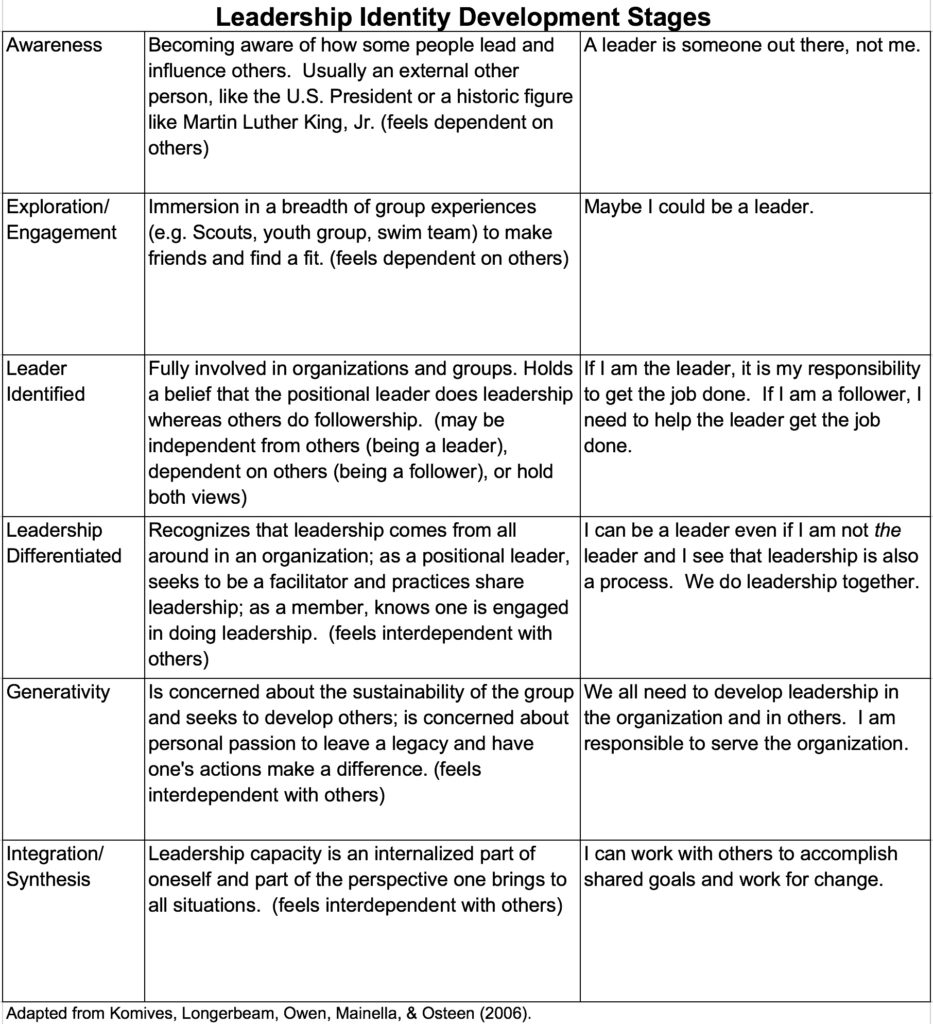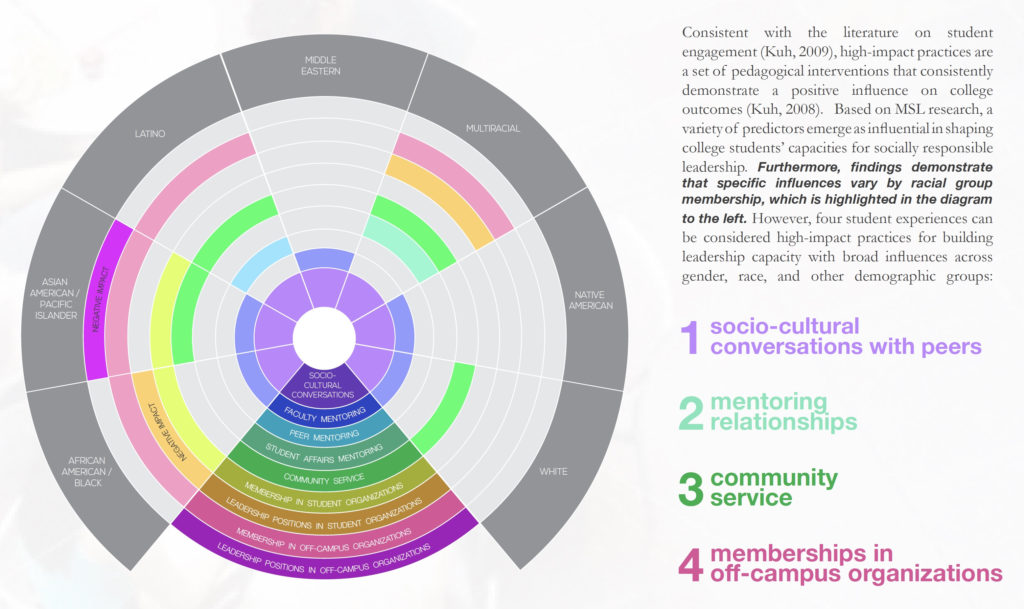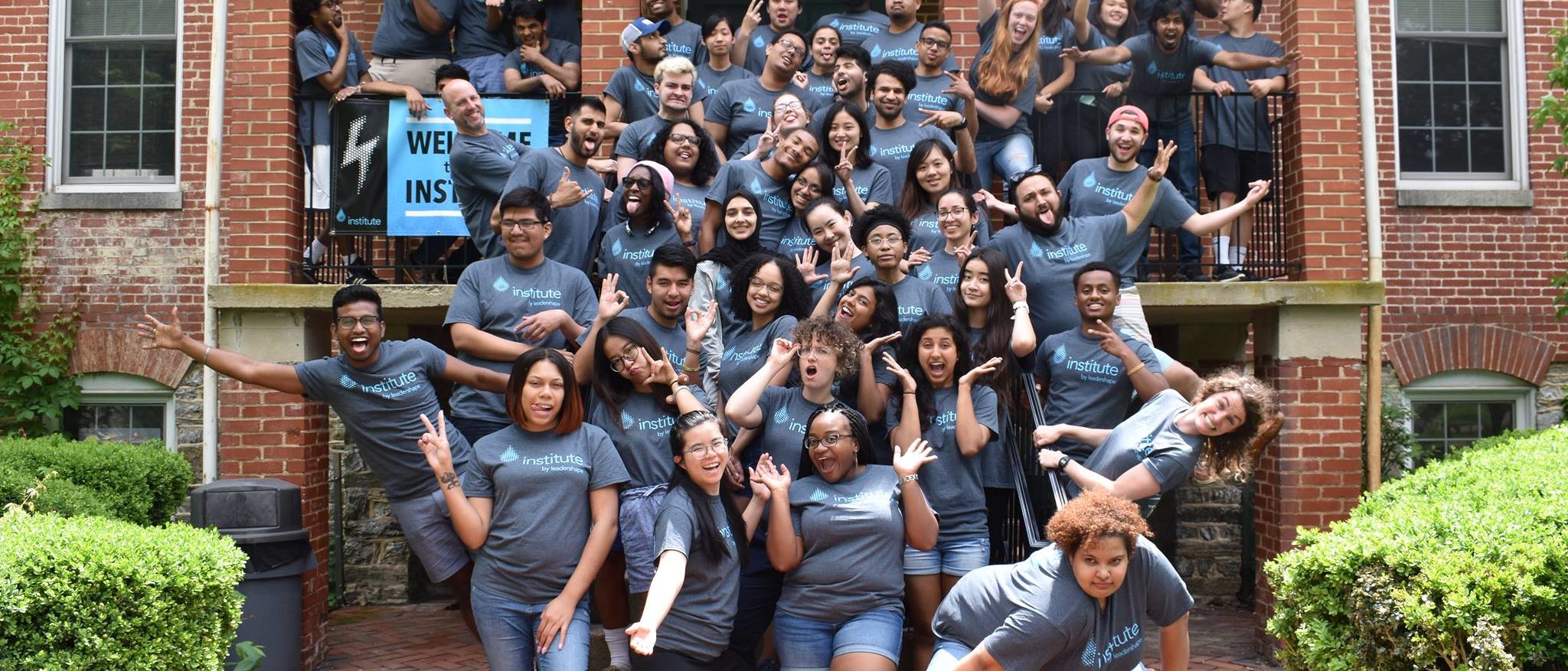Perspectives on Leadership
- The dictionary definition of "lead" is "...to show the way" but the word is used in many different ways
- Common uses of the word "leader"
- "THE leader" (typically positional, "Who is THE leader of this university?")
- Consider: Have you ever been in a group or organization where the members showed better leadership than the person in the position of power?
- "Leader in the field of X" (advanced/top of the field)
- Teamwork/relationships/working with others
- "THE leader" (typically positional, "Who is THE leader of this university?")
Leadership: Changing View
- “I used to view the leader of a group as the director of a play, telling people what to do and teaching them how to do it. Over the past five years however, I realized the director approach may get things done, but it does not motivate people, help them understand the importance of what they are doing, or ensure that the group will function in the absence of the leader. I have learned that the best leaders empower the individuals they lead, enabling them to contribute to the group and succeed on their own.” ~ Daniel Gregory, Penn State University student
Various Leadership Definitions
- "A relational and ethical process of people together attempting to accomplish positive change” -Komives, Lucas & McMahon
- “Leadership is the art of mobilizing others to want to struggle for shared aspirations” -Kouzes & Posner
- “Leadership is the exercise of influence in a group context” -Bernard Bass
- “Leadership is a function of knowing yourself, having a vision that is well communicated, building trust among colleagues, and taking effective action…” -Warren Bennis
LEAD's Assumptions and Philosophy
- Formal position not required (see "No Title Needed" below)
- Leadership can be learned and developed
- Many ways to be a leader (must consider the culture/context)
- Leadership should be inclusive
- Link leadership theory and practice
- Leaders must behave ethically
- Leaders should learn about themselves, others, and commit to serving the common good
No Title Needed: Beyond Positional Leadership
Leadership is a very important and very complex topic. Often, people mistake leadership education for an exclusive focus on positional leaders (e.g. presidents of organizations) or on management (e.g. how to run a meeting, delegation, budgeting). To be clear, positional leadership is very important and LEAD works proactively with those in leadership positions. We also work proactively with those who may take on leadership positions in the future. This semester's non-positional leader is next semester's positional leader.
However, leadership theory and research overwhelmingly point to the importance of a much broader view of student leadership development that's accessible to ALL students, whether or not they have (or will have) a position of leadership. As stated by a Mason faculty member: "[LEAD’s] vision of non-positional leadership has transformed leadership development at Mason. Specifically, by arguing that we can all be leaders, [LEAD] deconstructs leadership in ways that allow for increased opportunities for women and minorities. What [LEAD means] by non-positional leadership is that leadership is not only located (and therefore can be developed) in people and spaces that are not limited to student government or sorority and fraternity presidents... an expansion of the notion of leadership disrupts structural inequality and opens up spaces for developing leadership in folks with marginalized identities who occupy marginalized positions.”
Below is relevant information from the Council for the Advancement of Standards in Higher Education (CAS), the work of MasonLeads (masonleads.gmu.edu), and many others:
- CAS (Council for the Advancement of Standards in Higher Education): “Many college mission statements contain commitments to develop citizen leaders or prepare students for professional and community responsibilities in a global context. Throughout the history of higher education, however, leadership development has been targeted primarily toward students holding leadership positions, such as student government officials, officers in fraternities and sororities, and resident assistants. Consequently, only a handful of students had a genuine opportunity for focused experience in leadership development… This shift to colleges developing not just better, but more leaders, has resulted in leadership education efforts directed toward the entire student body. Because students experience leadership in many different settings—in and out of the classroom, on and off campus, through social media, virtually every student engages in some type of activity that involves the practice of leadership.”
- MasonLeads, Core Leadership Assumption #4: “Leadership does not require a formal position: Leadership is not a specific title, position, or role. Leadership can be practical and embodied in many ways within the lives of individuals and at the university.” (MasonLeads, Core Leadership Assumptions)
- Leadership Identity Development (LID) Model: “Development past [LID] Stage Three into interdependence appears to move into systems views and non-hierarchical perspectives deepening and broadening an individual’s leadership identity development.” (Komives et al, 2009) See LID grid below.
- LeaderShape, Inc.: “Leadership is not positional and does not require formal authority or personal charisma. Every person in the world has the capacity to effectively lead with integrity™, and this capacity can be developed in all people who are committed to doing so.”
- Multi-Institutional Study of Leadership Institutional Survey Findings, National Report: “Remnants of a leadership ‘excellence’ approach may preclude collaboration with disability and learning assistance services and fosters an over-reliance on partners in campus activities and programming.” (Owen, 2012)

What are the high-impact practices (Leadership Research)
What helps students develop as leaders for the world? Why should we engage Mason students in leadership education and development experiences? To get a job? In part, but there the real answer is much broader than that. We want Mason students to create positive changes for the world, whether that happens through their job, their volunteer work, their community organizations, their families, their friends, etc.
University Life’s Strategic Plan mentions the importance of Engaged Students: “Engage students in high impact curricular and co-curricular learning experiences." What is "high impact" when we are talking about leadership development?
- According to the Multi-Institutional Study of Leadership (MSL), there are 4 high-impact practices that consistently have a positive influence on student leadership outcomes.
- Socio-cultural conversations with peers
- “Socio-cultural conversations with peers are the single strongest predictor of socially responsible leadership capacity for students across demographic groups” (Dugan et al, 2013, p. 9)
- Mentoring relationships
- Community Service
- Membership in off-campus organizations
- Socio-cultural conversations with peers

References
- Association of American Colleges and Universities (2013). It Takes More than a Major: Employer Priorities for College Learning and Student Success. Hart Research Associates, on behalf of: The Association of American Colleges and Universities.
- Association of American Colleges and Universities. (2009). Ethical Reasoning VALUE Rubric. Retrieved from https://www.aacu.org/ethical-reasoning-value-rubric
- Busteed, Brandon (2014). The Biggest Blown Opportunity in Higher Ed History. Inside Higher Education
- Council for the Advancement of Standards in Higher Education (2012). CAS professional standards for higher education (9th ed.). Washington, DC.
- Ciulla, J. (2003). The ethics of leadership. Belmont, CA: Thomson/Wadsworth.
- Dugan, J. P., Kodama, C., Correia, B., & Associates. (2013). Multi-Institutional Study of Leadership insight report: Leadership program delivery. College Park, MD: National Clearinghouse for Leadership Programs.
- Illinois Leadership Center (2013) Leadership Benchmarking Study
- International Leadership Association (ILA) Guiding Questions: Guidelines for Leadership Education Programs; http://www.ila-net.org/Communities/LC/GuidingQuestionsFinal.pdf
- Komives, S. R., Longerbeam, S. D., Mainella, F., Osteen, L., Owen, J. E., & Wagner, W. (2009). Leadership Identity Development. Journal of Leadership Education, 8(1), 11-47.
- Komives, S.R., Lucas, N., & McMahon, T.R. Exploring Leadership: For College Students Who Want to Make a Difference (2007). San Francisco: Jossey-Bass Publishers.
- MasonLeads leadership assumptions were adapted from Komives, S.R., Lucas, N., & McMahon, T.R. in Exploring Leadership: For College Students Who Want to Make a Difference (2007). San Francisco: Jossey-Bass Publishers.
- Owen, J. E. (2012). Findings from the Multi-Institutional Study of Leadership Institutional Survey: A National Report. College Park, MD: National Clearinghouse for Leadership Programs.
- Prentice, R. (2014). Teaching Behavioral Ethics. Journal of Legal Studies Education, 31(2), 325-365.
- Prentice, R. (2015). Behavioral Ethics: Can It Help Lawyers (and Others) Be Their Best Selves? Notre Dame Journal of Law, Ethics and Public Policy, Available at SSRN: https://ssrn.com/abstract=2424249
- Price, T. (2008). Leadership ethics: An introduction. New York: Cambridge University Press.
- Wielkiewicz, R. M. (2000). The Leadership Attitudes and Beliefs Scale: An instrument for evaluating college students’ thinking about leadership and organizations. Journal of College Student Development, 41, 335-347.
